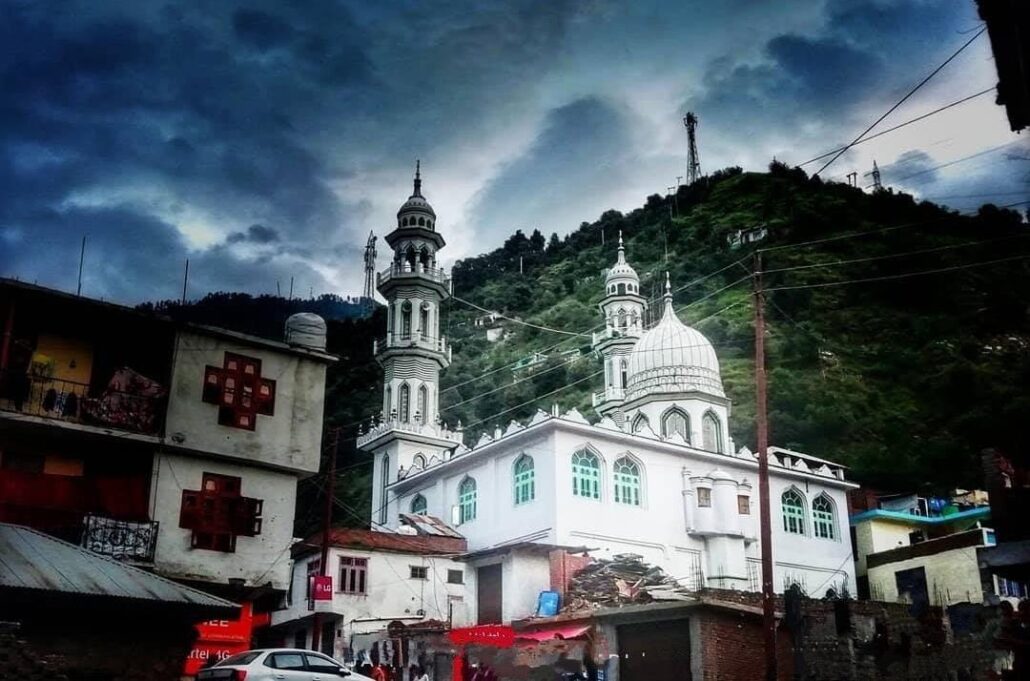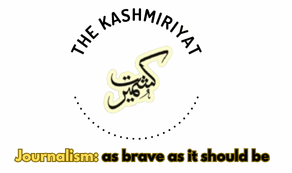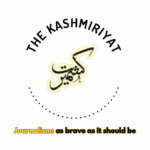
Danishwar Hameed/ Shah Basit
As the 2024 assembly elections approach in Jammu Kashmir, the Chenab Valley, comprising the districts of Doda and Kishtwar, stands at a pivotal juncture. This region, nestled in the mountainous terrain of Jammu Kashmir, is a vital area in the electoral landscape, especially with the upcoming first phase of voting.
“Despite being considered a part of Jammu, Chenab Valley is profoundly influenced by Kashmir’s culture and politics. The traditions, language, and even political dynamics are closely tied to Kashmir. Consequently, developments in Kashmir significantly impact the Chenab Valley,” Mubasir Ahmed, a senior advocate and political observer from Chenab valley told The Kashmiriyat.
The Doda District alone, with its three assembly constituencies—Bhaderwah, Doda, and Doda West—has recorded a total of 310,586 registered voters, as per officials.
The Bharatiya Janata Party (BJP), which once held a marginal presence in this hilly region, has now emerged as a formidable force, reshaping the political dynamics in Chenab Valley. The party’s performance in the 2014 elections was a clear indicator of this shift, where it secured four out of the six available seats in the Doda, Bhaderwah, Kishtwar, and Ramban constituencies.
Meanwhile, the Congress managed to hold onto two seats—Inderwal and Banihal—leaving the National Conference (NC) and the People’s Democratic Party (PDP) empty-handed in this region.
This transformation in the political landscape is even more pronounced following the delimitation of assembly constituencies, which increased the number of seats in Doda and Kishtwar districts from two to three each, while Ramban district’s constituencies remained unchanged.
The upcoming elections are set to be highly contested, with regional parties rallying for a tough fight against the BJP, which is keen on consolidating its influence further.
The first phase of the election, scheduled for September 18th, will cover 24 seats across the districts of Pulwama, Anantnag, Shopian, Kulgam, Ramban, Kishtwar, and Doda. With over 23.27 lakh people, including 1.23 lakh first-time voters, eligible to vote, this phase is crucial in setting the tone for the overall electoral battle in Jammu Kashmir.
In this context, the Chenab Valley is not just a battleground but a bellwether for the broader political currents sweeping through Jammu Kashmir. The outcome here could very well determine the trajectory of the region’s political future, making these elections some of the most fiercely contested in recent history.
Looking back at the 2014 elections, “The BJP’s victory was not solely due to a national wave in its favor. The real shift occurred because the opposition fragmented its votes by fielding too many candidates. This division of anti-BJP votes into multiple parts, sometimes up to five, left voters confused and contributed to the BJP’s success,” Mubashir told The Kashmiriyat.
2014: A Turning Point
The 2014 assembly elections marked the beginning of the BJP’s rise in the Chenab Valley. In Doda, Shakti Parihar secured 24,572 votes, narrowly defeating Abdul Majid Wani of Congress, who garnered 20,532 votes, while Khalid Najib Soharwardi of the National Conference (NC) trailed with 16,416 votes.
In Bhaderwah, BJP’s Daleep Singh clinched victory with 25,953 votes, edging out Congress candidate Mohd Sharief Niaz, who received 24,457 votes. The People’s Democratic Party (PDP) made a significant showing with 16,673 votes.
Kishtwar witnessed a fragmented electorate, with Sunil Kumar Sharma of BJP emerging victorious with 28,054 votes. His closest competitor, NC’s Sajad Kichloo, secured 25,202 votes, while PDP’s Firdous Ahmed Tak lagged far behind with just 6,432 votes. Independent candidates collectively garnered over 4,000 votes, further splitting the opposition.
In Ramban, Neelam Kumar Langeh of BJP won with 25,349 votes, defeating NC’s Chaman Lal Gupta, who received 19,985 votes. The combined efforts of the PDP and Congress could only muster a little over 10,000 votes.
Ghulam Mohd Saroori, now a key figure in the Democratic Progressive Azad Party (DPAP), secured 29,754 votes in 2014, comfortably beating his closest rival, Tariq Hussain Keen, who managed around 18,000 votes.
2024: A Battle for Supremacy
As the 2024 elections loom, the political climate in Chenab Valley is fraught with tension. The BJP’s gains have sparked a fierce contest, with regional parties scrambling to consolidate their base. However, vote scattering remains a significant challenge, with multiple candidates vying for the six assembly seats in the region.
The BJP’s rise in the Chenab Valley is significant, but it has not been without complications. “The Chenab Valley was shifting in favor of the BJP over the years, but things have changed drastically after the abrogation of Article 370 and the locals becoming more aware of the BJP’s policies. Besides jobs and business concerns, environmental degradation is a major issue. People are deeply worried about the unsustainable development practices in the region, fearing a potential catastrophe,” said Mubashir.
As the election nears, the dynamics in Doda reflect a desire for change among voters, though new faces have not fully emerged. “The people did not want to see old faces in Doda town. They sought new candidates, especially from JKNC. However, with internal disputes resolved, the competition has intensified, likely benefiting the BJP. Despite the anti-incumbency sentiment, the increase in the number of candidates from all parties is diluting its impact,” Mubashir observed.
In Doda, the situation is particularly chaotic. The east assembly segment has already witnessed nominations, leading to internal strife and confusion. Khalid Najib Soharwardi of NC has filed his nomination for the Doda east seat, triggering disputes within the party ranks. However, these issues seem to have been resolved with Advocate Asim Hashmi’s decision to support Soharwardi. Hashmi, who made headlines in 2020 by defeating BJP’s Shakti Raj Parihar in the District Development Council (DDC) elections, brings considerable influence to the table.
Yet, the trouble is far from over. Former MLA Abdul Majeed Wani, now contesting on a DPAP ticket, is expected to give a tough fight. Wani, a seasoned politician with a strong public reputation, previously won the Doda seat and remains a formidable opponent.
Adding to the complexity, Mehraj Malik, who began his political journey with the Aam Aadmi Party (AAP) in 2013 and ran as an independent candidate in the 2014 assembly elections, is also eyeing the Doda east seat. Malik won the 2020 DDC polls as an independent candidate with a margin of 3,511 votes and was elected as a DDC Councilor for the Kahara constituency.
The BJP, meanwhile, has put forward Gajay Singh Rana for Doda east and Shakti Singh Parihar for Doda west. The opposition in Doda west appears disorganized, lacking a prominent candidate to challenge Parihar’s dominance.
Doda District’s electoral landscape includes AC 52-Doda with 98,582 voters, AC 51-Bhaderwah with 124,568 voters, and AC 53-Doda West with 87,436 voters. Across these constituencies, 534 polling stations have been set up to ensure efficient voting management.
In Kishtwar, the stage is set for a direct contest between Sushri Singh Parihar of BJP and Sajad Ahmed Kichloo of NC. Parihar, the niece of the late Anil Parihar, a veteran BJP leader who was killed in a militant in 2018, carries a legacy that could sway voters. Anil Parihar was an influential figure in the BJP, having strengthened the party’s base in Doda, Kishtwar, and Bhaderwah. His death was a severe blow to the party, but his legacy endures, with Sushri now leading the charge.
In Inderwal, Ghulam Mohd Saroori of DPAP is expected to retain his seat, though not without a challenge from BJP’s Tariq Keen, who lost to Saroori by over 12,000 votes in 2014. “Saroori’s recent departure from the Indian National Congress (INC) may cost him some support, with Azad’s image reportedly suffering in the Chenab Valley,” Mubashir told The Kashmiriyat.
Padder-Nagseni is likely to be an easy win for the BJP, where Sunil Sharma remains the frontrunner, with no prominent opposition figures in sight.
In Bhaderwah, which has recently seen the inclusion of Bhallesha, Mohd Aslam Goni has been fielded by Azad’s DPAP, while the PDP, with its strong presence in the district, is rallying behind a former IAS officer who has been actively engaging with the electorate. The BJP is placing its hopes on Dileep Singh Parihar to reclaim the seat.
“Regional clashes between Bhaderwah and Bhallesha is a determinant factor here. While All other parties have fielded their candidates from Bhaderwah, where the BJP has minimal support. On the contrary, BJP cleverly have managed to chose candidate from Bhallesa, which is half of the vote share in that particular constituency,” Mubashir epressed.
He said that the 2024 assembly elections in Chenab Valley are set to be a litmus test for both the BJP and the regional parties. “While the BJP has consolidated its position since 2014, the resurgence of local candidates and the fragmentation of the opposition vote could lead to unexpected outcomes,” he opined.
As the election date draws nearer, the political temperature in this strategically important region is bound to rise, with all eyes on the Chenab Valley as a key battleground in Jammu Kashmir’s electoral landscape.




